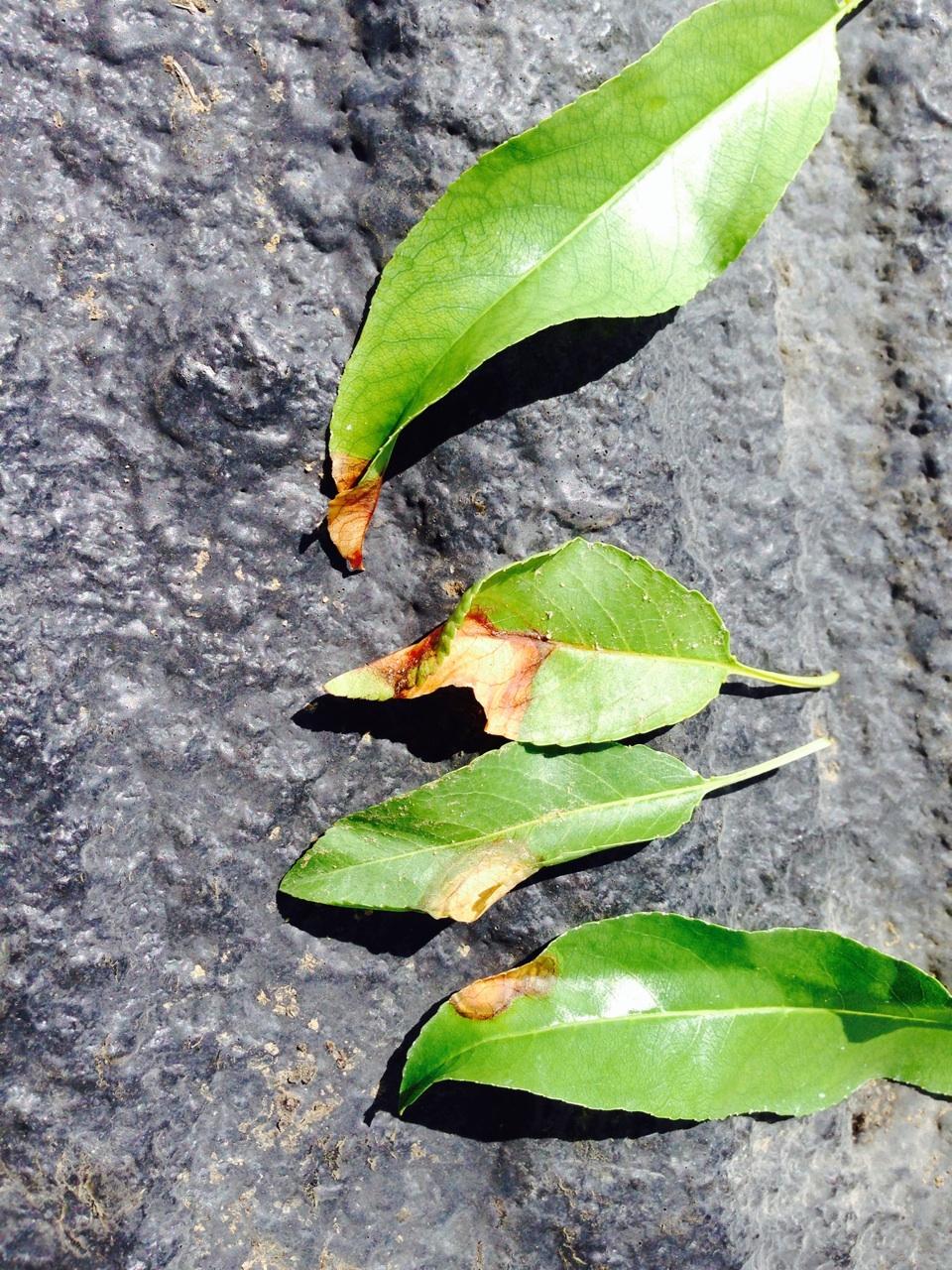Odd leaf symptoms on several different varieties have been reported across the valley. Predominantly found on Padre, they are found on the edge or the tip of the leaf. The lesions can be quite large, but tend to have a watersoaked margin and a yellow halo. In other varieties, the lesion has a shot-hole-like appearance, but fruiting bodies are not visible. Farmers have complained that fungicide spray programs have not been effective in controlling this disease.

This problem appears to be bacterial. In 2011, and 2012, the same symptom was observed in Padre. It caused noticeable leaf drop, but did not appear to affect crop. Most growers did not make a spray application for control. Isolations by Roger Duncan (UCCE Stanislaus) and Jim Adaskaveg (UC Riverside) have confirmed that this disease is caused by Pseudomonas syringae. Periods of warm temperatures in the spring with high dews and rain seem to encourage the onset of these symptoms. Once these conditions pass, the occurrence of this disease will decrease.
There are no labeled products for this disease and most fungicides will not provide protection for bacterial diseases. Multi-mode of action fungicides will have some bactericidal activity, these include FRAC M3 (i.e. Manzate Pro-Stick and Ziram) and copper. Copper applied at too high of a rate will cause phytotoxicity. Products that boost the systemic resistance of the plant may have some activity and some are labeled for specific bacterial diseases. These include K-PHITE 7LP and Regalia.
This is not the same bacterium that causes bacterial leaf spot of almond (Xanthonmonas arboricola pv. pruni). The symptoms are different, even though they both are caused by bacteria. Symptoms of that disease will begin to appear on ‘Fritz’ and ‘Padre’ towards the end of this month, middle of May.


jim torigiani
April 4, 2014i have also seen these type of symptoms in kern county this year on other varieties. i blamed nutrients but i don’t think its that. it does seem to be where moisture sits on a leaf area.
David Doll
April 4, 2014Thanks Jim for sharing. Seems like heavy dews were more common this year than in the past.
Rajan
April 6, 2014I am working on seed transmitted diseases, if you can guide me on – What diseases (bacterial/ fungal/ viral) are transmitted by seeds of almonds/ nuts? I would be greatly benefited.
David Doll
April 11, 2014Rajan,
I am unaware of any major diseases that are seed born within almond. Since most of our propagation is through grafting and tissue culture of certified stock, we have reduced the threat of these types of diseases.
Sorry I am not much help,
David
Rod Vilas
April 9, 2014I am also experiencing these symptoms in my padre blocks. Not a big leaf drop, but enough to catch my eye while walking the fields. Roughly 80% of the leaves that have fallen show the same symptoms as pictured above. The other 20% show no symptoms on them. The leaves are showing some mild Iron deficiency, with chlorotic foliage. The buttes and the rubys in these blocks are not showing any of the symptoms, except for the mild iron deficiency.
David Doll
April 10, 2014Thanks for sharing, Rod.